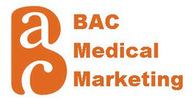A one-stop shop for toothpaste, prescription drugs, and a diabetes diagnosis? The retail clinic phenomenon has its appeal: it allows patients convenience and better access to care through longer hours and more locations than our health care system now provides. Walgreens leaders bill their latest offering as a complementary service to traditional medical care. They envision close collaboration with physicians and even inclusion in Accountable Care Organizations, according to reporting by Forbes’ Bruce Japsen (though it’s not clear how the retailer would share the financial risk or savings in such a model).
But the Walgreens announcement was met with skepticism by physician groups like the American Association of Family Physicians (which has responded defensively in the past to non-physicians’ growing roles as primary care providers). And there are certainly causes for concern, at least based on what we know so far: Such expanded clinics exacerbate the fragmentation in our already piecemeal system. Providers at retail store clinics don’t have access to patients’ medical records, so they might repeat prior efforts or miss key details in caring for these patients. Per standards set by the American Medical Association, retail clinic providers must establish continuity of care with a patient’s primary care doctor if he has one – this usually takes the form of a faxed note, which can’t compare to real-time communication within an integrated network. Providers at retail clinics are obliged to adhere to rigid protocols for evaluating and treating medical issues, but good chronic care management is customized to a patient’s particular lifestyle and needs. In short, chronic care, more so than one-off medical treatment, is best delivered with consistency by a coordinated team of providers (including NPs and PAs but also primary care doctors and specialists) who have gotten to know the patient over time and have built a relationship of trust.
The idea just might work if established health care systems with specialty providers forge meaningful partnerships with retail clinics – for example, with shared access to electronic health records and staff members who move between settings. If, in other words, the retail clinics are true extensions of the primary care home. It’s hard to say if a retail clinic could or would want to meet these criteria.
While those of us working in more traditional health care settings may have legitimate reservations about how Walgreens-brand chronic care will be delivered, we have to acknowledge that it addresses a need that we are not fulfilling. Walgreens made a savvy business move by targeting a growing population of aging Americans with diabetes and cardiovascular disease and offering services that are truly important and underused. We can and should learn from how their experiment plays out: Who will opt for this care? Will Americans use it as a stopgap between visits with their primary care doctor or only when they don’t have one to begin with (according to the Salt Lake Tribune, nearly half of current Take Care users don’t have access to one)? Will they come back a second time? What will they like about it? Which locations and hours will be most popular? Will the appeal of cheaper care (compared to paying out of pocket) fade as more Americans are folded into insurance plans? If we can better understand how these nontraditional clinics address gaps in the system, we can work with retail clinic providers more effectively and fill those gaps with truly coordinated chronic care.

 RSS Feed
RSS Feed































